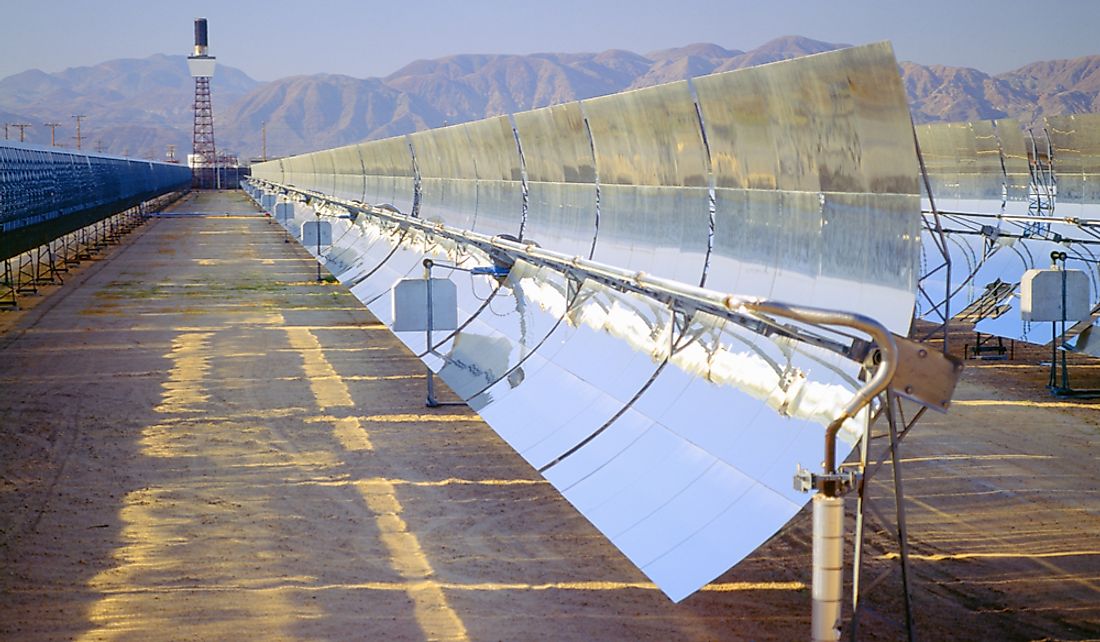What Are the Major Sources of Energy in the United States?

The United States is one of the biggest producers and consumer of various forms of energy. The sources of energy can be classified as either primary/ secondary or renewable/nonrenewable. Regardless of the classification, fossil fuels are the major sources of energy with petroleum, coal, and natural gas contributing almost 77.6% of the energy produced in the US. The major sources of energy are discussed below.
5. Natural Gas - 31.8%
Natural gas is the leading source of energy in the United States contributing a total of 31.8% of energy produced in the country. The United States is also the largest global producer of natural gas with the output increasing gradually each year since 2009. The top producing regions are Texas, Pennsylvania, and Louisiana. There are large exploration companies with numerous wells that produce both natural gas and oil. The high supply of the commodity has led to a reduction in price in the US compared to prices in other producers such as Japan, Saudi Arabia, and Europe. The abundance of natural gas has led to a significant increase in electricity produced from the gas. Energy consumed in the industrial sectors has also increased leading to higher output. Liquefied Petroleum gas (LPG), a product of natural gas, is used widely for cooking, heating, and for motor fuel. The natural gas industry is structured into exploration, production, transportation, refining, distribution, and marketing. Each role is performed by experts to maintain quality. In 2015 and 2017, the country produced the highest levels of natural gas compared to any other year. The increase in production has been enhanced by more effective and efficient drilling techniques which incorporate modern technology. Natural gas is distributed through interstate pipelines which covered a total of 189,000 miles as at 2014.
4. Petroleum - 28%
Petroleum is the second major source of energy in the United States. The source of energy gained popularity in the 20th century as it powered the industrial and commercial sectors. Petroleum is also consumed in large quantities in the automobile sector due to the affordability of motor vehicles a factor that has led to a rapid increase in demand hence higher prices. Exploration for oil is an ongoing exercise in the US. New oil reserves were discovered in the 1920’s terminating the fear of oil depletion that had gripped America at that time. The most recently discovered high yield oil fields were in the Federal Gulf of Mexico and Texas in 1998 and 2009 respectively. The top five oil producing companies are Bp, Chevron, ConocoPhillips, Exxon Mobil, and Occidental Petroleum. Efficiency in distribution and marketing of petroleum makes the product easily accessible by the final consumer. Distribution channels used are pipelines, rail or barge. Numerous retail outlets ensure the product reaches the final consumers.
3. Coal - 17.8%
Coal is the third major source of energy in the United States contributing up to 17.8% of energy produced in the country with multiple states dependent on coal. The quantity of coal mined keeps on fluctuating with 2008 recording peak production. Recent years have seen a reduction in coal produced mainly because of a decrease in the quantity of coal consumed in the electricity generation sector. Most of the coal mined is consumed domestically with the remaining being exported. Europe, India, and Brazil are the largest importers of coal from the US. Coal is mined in 25 states with the largest producing states being Wyoming, Kentucky, West Virginia, Pennsylvania, and Illinois which produce over 71% of total coal in the US. Coal can be classified as either hard or soft. Hard coal, also known as anthracite, is used for steel production, heating, or fuel for railroads and ship. Soft coal is used as Bitumen. Currently, coal reserves in the US are estimated to be over 477 billion tonnes.
2. Renewable Energy - 12.7%
Renewable energy accounted for 12.7% of total energy produced in the US. Various forms of renewable energy are hydroelectricity, wind power, solar power, geothermal, biofuel, and other biomass energy sources. Hydroelectric power is the highest source contributing over 24.4% of renewable energy. The US is ranked 4th in global production of hydroelectricity after China, Brazil, and Canada. There is an increased focus on energy from solar and wind. The sources are seen as not only cheap but also naturally available. The two have therefore consistently increased energy contribution to the national grid. Solar power has greatly contributed to electric power after setting up numerous photovoltaic power plants such as the Solar Star, Topaz Solar Farm, Riverside County, and Desert Sunlight Solar in California. Ivanpah Solar Power Facility in Las Vegas with a capacity of generating 392MW has greatly contributed to renewable energy. Renewable energy is expected to grow further due to its sustainability and government support. The government has been giving subsidies and incentives to enhance the generation of renewable energy. Laws have been enacted in various states to promote renewable energy.
1. Nuclear Electric Power - 9.6%
Nuclear Electric power is the fifth major source of energy accounting for 9.6% of energy sources in the United States. The US is the largest producer of commercial nuclear electric power in the world from its 99 commercial reactors which has a capacity to generate 100,350 MW. In 2017 alone, the reactors generated 805 Billion KWh which accounted for 20% of electricity output in the country. Nuclear capacity has continuously increased since the late 1990’s after the government amended policies regarding nuclear energy. The nuclear plant with the largest capacity is the Palo Verde located in Arizona. The nuclear plant has 3 reactors which can generate 3,937 MW at its peak. The government is encouraging investors in the nuclear electric power. The newest reactor was opened in October 2016 and can generate 1,150 MW at its peak in summer. Two more plants are under construction in Georgia.











